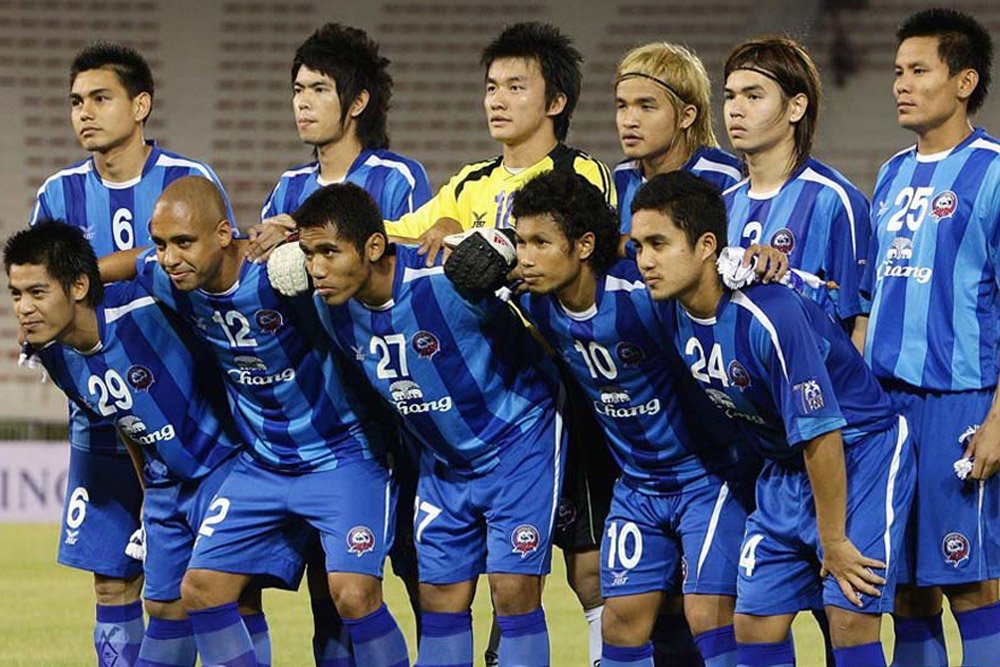
Think of Chonburi Football Club and probably the first thing that comes to mind is the club’s ability to continually produce some of the best youth players in the Thai League.
Among the many clubs around, the Sharks are the most associated with this trait, as is evident from many players who have passed through their production line from the academy to the first team.
Collaboration with schools is just one of the key initiatives that have enabled the club’s academy to be the standard and benchmark for clubs in Thailand on how to become almost like a ‘factory’ creating good to great players for domestic football.
This is a deep-dive story on Chonburi’s youth academy and the performance of those who graduated from it to become prominent footballers.
The beginning
Chonburi is a football club that puts a lot of emphasis on its junior programs because, unlike other teams, big sponsorship deals are hard to come by.
Therefore focusing their effort on growing and building the club organically became the primary target and eventually a driver for the club to stay among the elites in the Thai League.

Sintaweechai Hatairattanakul, Suree-Surat Sukha, and Pipob On-Mo, are just a few examples that you may recognize that started their impressive careers at the Chonburi youth program as part of its collaboration with Assumption Sriracha College.
These same players were the team's fulcrum that helped Chonburi win the Thai League title in 2007.
No expenses were spared to ensure that the program got what it needed to be successful, with the best equipment and facilities at Chang Football Park. The team’s former home stadium includes a canteen, fitness room, other accommodations and a swimming pool, making it among the leading facilities in Thai football.

These combined make it a very enticing prospect for aspiring young footballers looking for a club to hone their skills and talents. It is THE academy for kids around the neighboring provinces, thanks to the incredible infrastructure available to them.
Training the young Sharks
Like many training centers in foreign countries, Chonburi opened up their facilities to train kids aged 12-18 who would all be taught by ‘Coach Heng’ Wittaya Laohakul, the first-ever Thai national team footballer to play in the German League.

The academy focuses on laying a solid foundation and better understanding of their kids' tactics instead of focusing only on individual skills. That is because at the club, the team is more important than the individual and the methodology follows that principle to succeed as a team.
Its curriculum aims at developing players according to their age, with the style centering around a passing game, the players are trained to excel in those surrounding qualities of passing, receiving, dribbling and shooting the ball.
Every player is tracked and monitored, with the coaches having access to mountains of data that evaluate how each player’s progress and what their most vital attributes are.
After months or tournaments, the coaches will use this data to improve on the weaknesses seen in each player.

Now, what is key is the evaluation. Players aren’t always aware of where they’re lacking; this is where the Chonburi coaches come in, providing unbiased judgment and advice for the trainees to understand and begin to improve with the design of special training.
The academy also provides support to help the children know and understand their long-term goals to stimulate their training further. While there’s a link to the Chonburi first team, the academy encourages players to reach for foreign leagues if attainable.

The curriculum is constantly updated to ensure the program stays relevant and current, making sure old and outdated methods are discarded accordingly.
All these essential factors help to make the Chonburi academy on top of its game and highly respected in the football industry not only in Thailand but also across the Southeast Asian region and perhaps even in Asia.
Rising stars of the Thai national team
At present, the Chonburi academy has produced several talented players. This is highlighted by Kritsada Kaman, who came through the ranks at Chonburi and now, at 23, has become a first-choice player for the Thai national team.

In addition, Worachit Kanitsripamben was Chonburi’s midfield maestro before earning a 40 million baht (€1.09m) move to BGPU.
Younger players looking to emulate the predecessors’ footsteps are the likes of Chatmongkol Rueangthanarot, Songchai Thongcham, Phitak Pimpae, Bukkoree Lemdee, and also Channarong Promsrikaew, who recently scored on his national team debut in the 48th King’s Cup tournament.
The success of these players vindicates the club’s decision to focus on their academy in light of their financial limitations. The young players are saving the club considerable amounts in transfer payments.
It’s a given that not 100% of the players from the academy would go on to become professional players or even players for Chonburi's first team.

Still, the academy's value can also be measured in those players being sold for a significant transfer fee or succeeding at other clubs.
The pathway from the academy to first-team football and, subsequently, the national team shows the essence and success of Chonburi’s academy.
A stellar example from a professional aspect but also a community standpoint, the Chonburi academy is undoubtedly the beacon of hope and standard for football academies in Thailand.





